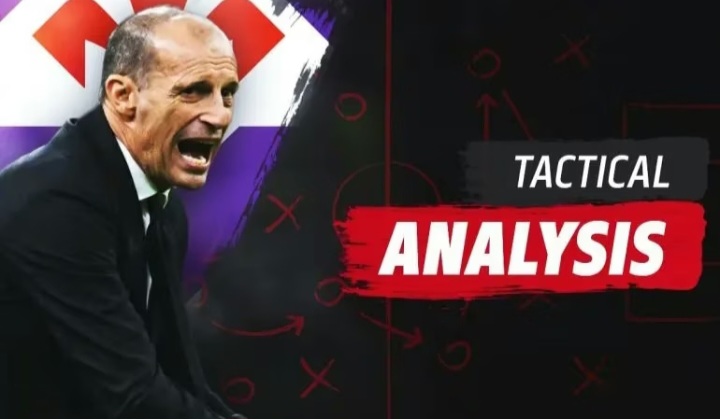AC Milan found themselves with a second-half deficit to overcome against Fiorentina, but overcome it they did to win 2-1 and go top.
Milan went into the season with 19 outfield players, and they have been hit by an injury crisis in the past week. Christian Pulisic, Adrien Rabiot, Christopher Nkunku, Pervis Estupinan, Ruben Loftus-Cheek and Ardon Jashari all missed out, meaning only seven players on the bench, of which two were goalkeepers.
Fiorentina were on course for their first win of the 2025-26 Serie A season when Robin Gosens’ scored from close range early in the second half. However, the reaction from the wounded Rossoneri was nothing short of exceptional, as Rafael Leao stepped up to the plate.
The Portuguese levelled the scores with a lovely shot from distance, before converting a penalty that Santiago Gimenez won inside the final 10 minutes. The result was another big three points to go back into first, and Rohit Rajeev has provided a tactical breakdown of the game.
Allegri and Pioli’s plans
Milan set the tone early, using a conservative shape, with only the front two pressing. Here, Leão’s curving run cuts off De Gea’s passing lane, while Saelemaekers shuts down Nicolussi Caviglia. Smart, compact pressing from Allegri’s side.
Pioli’s plan was clear: to target Milan’s young wingbacks in 1v1 situations. Fiorentina used counter-movements to drag players out of position and stop Milan from creating 2v1s. Here’s a perfect example.
Milan smartly used third-man runs, often through Ricci. Saelemaekers would drop deep, dragging his marker, and opening up space behind for Ricci to burst into. Clever movement and timing from Milan.
The best first-half chance came from a smart set-piece routine. Pioli’s mix of man and zonal marking backfired as Gabbia drifted wide, dragging his marker and opening space between defenders for Pavlović to attack.
Milan relied on wide build-ups to progress the ball. They’d carry it out to the middle third before a pivot like Modrić dropped deep, receiving from the wide areas and shifting play centrally to control tempo.
Some clarity on Ricci
Why had Allegri been benching Ricci? It’s a question many of us had, but the Fiorentina game gave some answers. Both Modrić and Ricci are being used as No.6s, while Rabiot (and soon Jashari) fill the No.8 role.
Comparing heat maps vs. Udinese and Fiorentina shows it clearly:
➤ Rabiot operates higher and wider on the left as a true No.8
➤ Ricci/Modrić stay central, dictating play deeper
Allegri had to tweak his tactics to fit two similar profiles. Milan shifted dynamically into a double pivot – Modrić and Ricci as dual No.6s, allowing Fofana to push higher into the No.10 role.
When Milan needed more men forward, Ricci rotated with Modrić, dropping as the lone No.6 while the other advanced as a No.8. Smart, flexible midfield play.
Fiorentina took the lead after a defensive lapse from Milan. With several defenders ball-watching, Athekame and Bartesaghi lost track of Kean, whose swing confused Maignan, allowing Gosens to tap into an open net. The chance? A massive 0.98 xG. Nearly impossible to miss.
Gimenez changes the game
With Leão up front – not a natural No.9 or strong box presence – Allegri adapted by using him as a false nine. The plan? Avoid spam crosses and instead rely on passing combinations and third-man runs, rooted in Relationism.
But the approach didn’t click, leading to Giménez’s introduction to change the dynamic.
Leão got a double, but Giménez’s introduction was pivotal. With a true striker up top, Milan finally had a reference point, stretching play vertically.
In this example, Giménez’s presence keeps the defender pinned, giving Tomori the space to surge forward.
While Giménez stretched play vertically, it also freed Leão to operate between the lines, his preferred zone.
Here, Leão’s shot sneaks through the gap created by Giménez and Pavlović tracking their men — an xG of just 0.02, but a perfect example of spatial manipulation.
With Giménez now occupying the box, Milan saw a surge in crosses. The key moment? Parisi fouling Giménez, showing how his presence drew defenders in. Second-half crosses: 4v0 in the first, a clear shift in attacking dynamics.
Allegri’s man-management is top tier. Despite the conceded goal, Milan controlled the game and kept Fiorentina largely at bay. The key area for improvement? Potency on the ball, though with so many injuries, that was always a tough ask.

